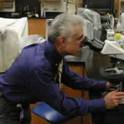
Article
Artificial Neural Network-Based Estimation for Pseudomonas aeruginosa Experiments
IEEE Proceedings
(2007)
Abstract
Pseudomonas aeruginosa (PE), a ubiquitous bacterium, has an overwhelming presence among hospitals and nursing homes. Common infections and inflammation caused by PE are acute pneumonia and infection related pulmonary complications in cystic fibrosis patients. We used cultures of human lung fibroblasts to investigate the mechanism of PE-induced inflammatory response. In our controlled experiments, we sought to confirm the hypothesis that PE induces interleuking 8 (IL-8) gene expressions and protein synthesis by interacting with epidermal growth factor receptors (EGFR) and activation of the nuclear factor kappa B (NFkappaB). The results from the experimental data are used in training and developing an Artificial Neural Network (ANN) which can estimate different sets of data quickly and efficiently for different PE experiments. This paper presents our experiences with the development and use of the ANN that can potentially boost PE research by saving several hours of lab work and reducing costs.
Keywords
- Artificial neural networks,
- Epidermis,
- Fibroblasts,
- Gene expression,
- Hospitals,
- Humans,
- Lungs,
- Medical services,
- Network synthesis,
- Proteins
Disciplines
Publication Date
April, 2007
DOI
10.1109/TPSD.2007.4380367
Publisher Statement
First published in Region 5 Technical Conference, 2007 IEEE.
Citation Information
Azghani, A. O. (2007). Yarlagadda, A. C., Subramanian, N. Artificial Neural Network-Based Estimation for Pseudomonas aeruginosa Experiments. IEEE Proceedings, 133–137.
